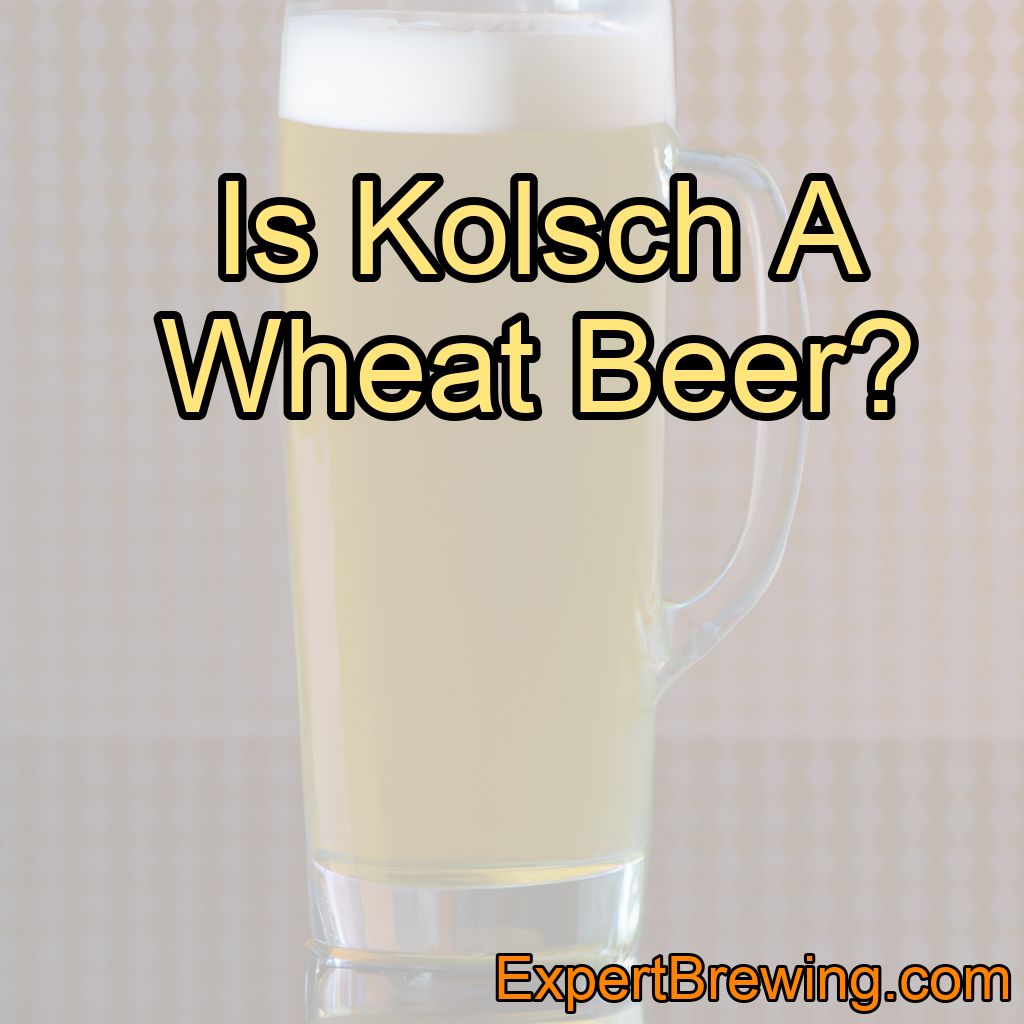As a passionate brewer and beer enthusiast, I often find myself drawn to the intricate and diverse world of beer styles. One style that has caught my attention is the Kölsch, a golden, refreshing brew with a fascinating history. But one question that keeps popping up is:is Kölsch a wheat beer?
To answer this question, let’s dive into the world of Kölsch and explore its origins, brewing process, and characteristics. As we unravel the layers of this delightful beer, you’ll discover how it differs from traditional wheat beers and why it’s worth savoring.
1. The Origin of Kölsch
Kölsch is a beer style that hails from the city of Cologne, Germany. The name itself is an appellation, meaning it can only be legally called Kölsch if it is brewed within 50 kilometers of Cologne. This unique beer style has a long history dating back to the 13th century but gained popularity in the 19th and 20th centuries.
2. The Brewing Process
Kölsch is brewed using a top-fermenting process, which is similar to that of wheat beers, such as Hefeweizen and Witbier. However, Kölsch is then cold-conditioned like a lager, which results in a hybrid brewing process that combines the characteristics of both ale and lager brewing. This combination gives Kölsch its unique taste and flavor profile.
3. The Grains
The primary difference between Kölsch and wheat beers lies in the grains used for brewing. Kölsch is brewed primarily with Pilsner malt, which is a barley-based malt, while wheat beers are brewed with a significant portion of wheat malt. SoKölsch is not a wheat beeras it does not contain wheat malt.
4. The Appearance
When it comes to appearance, Kölsch is a clear, pale gold beer with a slight effervescence and a foamy white head. Wheat beers, on the other hand, tend to have a hazy appearance due to the presence of wheat proteins and yeast, which remain suspended in the beer.
5. The Aroma
The aroma of a Kölsch is delicate, with subtle fruity notes and a hint of hoppy spiciness. Wheat beers have a more pronounced aroma, often with strong notes of banana, clove, and sometimes even bubblegum, depending on the yeast strain used in brewing.
6. The Flavor Profile
Kölsch has a crisp, clean flavor with a slightly sweet malt backbone and a subtle hop bitterness. Wheat beers, however, showcase a more robust flavor profile, with the wheat malt adding a bready or doughy flavor and the yeast contributing the characteristic banana and clove notes.
7. The Mouthfeel
Kölsch is known for its light to medium body, with a smooth and refreshing mouthfeel. Wheat beers tend to have a creamier, fuller mouthfeel due to the higher protein content in the wheat malt, which contributes to a more substantial body.
8. Kölsch vs. Wheat Beer: The Verdict
Now that we’ve explored the characteristics and brewing process of Kölsch, it’s clear thatKölsch is not a wheat beer. While they share some similarities in aroma and brewing techniques, Kölsch and wheat beers have distinct differences in appearance, flavor, and mouthfeel.
Conclusion
In conclusion, Kölsch and wheat beers may share some common ground, but they are distinctly different styles of beer. To summarize, here are five key differences between Kölsch and wheat beers:
1. Kölsch is brewed primarily with Pilsner malt (barley), while wheat beers contain a significant portion of wheat malt.
2. Kölsch is clear and pale gold, while wheat beers are often hazy.
3. The aroma of Kölsch is delicate and subtle, while wheat beers have a more pronounced aroma with notes of banana and clove.
4. Kölsch has a crisp, clean flavor profile, while wheat beers showcase a more robust, bready flavor.
5. The mouthfeel of Kölsch is light and smooth, while wheat beers tend to be creamier and fuller-bodied.
So, the next time you’re sipping on a refreshing Kölsch, take a moment to appreciate its unique characteristics and the centuries of brewing tradition that have gone into crafting this delightful beer style. Prost!
FAQs
How much wheat is in a kölsch?
Kölsch is a type of beer that originated in Cologne, Germany. It is a pale, top-fermented ale with a light, crisp flavor profile. The grain bill for a Kölsch typically consists of Pilsner malt, which is made from barley, and a small percentage of wheat malt (usually around 10-20%). So, in a Kölsch beer, the wheat content can be estimated to be approximately 10-20% of the total malted grains used in the brewing process.
What grain is used in Kölsch beer?
Kölsch beer primarily uses Pilsner malt, which is a pale, lightly kilned malt made from 2-row barley. This grain provides a clean, crisp flavor profile that is characteristic of Kölsch beers.
What makes Kölsch beer different?
Kölsch beer is different due to its unique brewing process, geographical origin, and flavor profile. It is a pale, top-fermented beer originating from Cologne, Germany, and is brewed using a specific ale yeast that ferments at warmer temperatures, followed by a cold-conditioning phase similar to lager beers. This hybrid brewing process results in a light, crisp, and refreshing beer with subtle fruity notes and a delicate hop bitterness. Additionally, Kölsch beer is protected by the Kölsch Konvention, which dictates that only breweries within the Cologne region can legally produce and label their beer as Kölsch.
What yeast is best for Kölsch?
The best yeast for Kölsch is the Kölsch-style ale yeast, specifically the White Labs WLP029 (German Ale/Kölsch Yeast) or Wyeast 2565 (Kölsch Yeast). These yeasts are known for their clean and crisp fermentation characteristics, which are essential for producing the delicate and balanced flavor profile of a traditional Kölsch beer.
What grains are in a Kölsch?
Kölsch is a German beer style that primarily uses Pilsner malt, a pale and lightly kilned grain, as its base. Some variations may also include small amounts of specialty grains such as Vienna or Munich malts for added complexity and flavor. Kölsch is characterized by its light, crisp, and slightly fruity taste.




